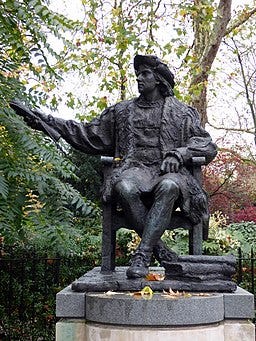The war on statues is not a fight over 'context' & 'colonialism'.
It is a naked attempt to control the past, and hence the present.
In fourteen hundred and ninety-two
Columbus sailed the ocean blue.
He had three ships and left from Spain;
He sailed through sunshine, wind and rain.
So goes the once-popular children’s rhyme by Jean Marzollo. But perhaps it now needs updating:
Over five hundred years later,
His statue: attacked by haters;
Who covered him up with red paint,
To remind us he was no saint.
Okay, I’m clearly no poet. But then again, few children today are likely to have come across the original ditty. Once, history was seen as a powerful source of stories that could excite, inspire, and cultivate national pride. Today, it only ever offers lessons in guilt, shame, and self-loathing. We are expected to denounce the past and do penance for its sins.
There is something inherently medieval about attacking statues. Public tributes to historical figures – statues, street names and plaques – are vandalised, erased, or ‘contextualised’ with instructions on the correct way for observers to respond. Campaigners seem unable to distinguish between inanimate objects and real people as they punish lumps of metal in moral purification rituals.



